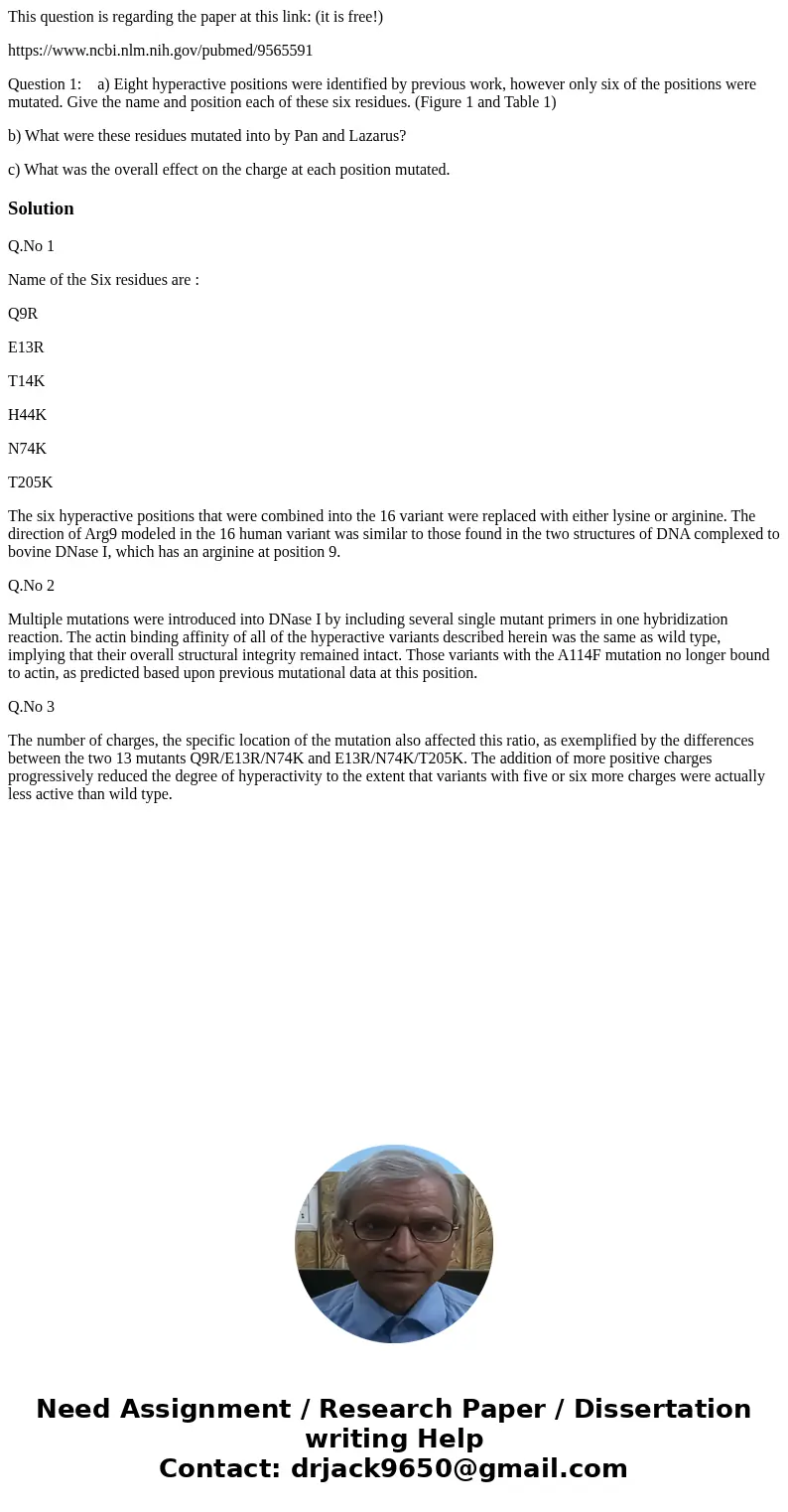This question is regarding the paper at this link it is free
This question is regarding the paper at this link: (it is free!)
https://www.ncbi.nlm.nih.gov/pubmed/9565591
Question 1: a) Eight hyperactive positions were identified by previous work, however only six of the positions were mutated. Give the name and position each of these six residues. (Figure 1 and Table 1)
b) What were these residues mutated into by Pan and Lazarus?
c) What was the overall effect on the charge at each position mutated.
Solution
Q.No 1
Name of the Six residues are :
Q9R
E13R
T14K
H44K
N74K
T205K
The six hyperactive positions that were combined into the 16 variant were replaced with either lysine or arginine. The direction of Arg9 modeled in the 16 human variant was similar to those found in the two structures of DNA complexed to bovine DNase I, which has an arginine at position 9.
Q.No 2
Multiple mutations were introduced into DNase I by including several single mutant primers in one hybridization reaction. The actin binding affinity of all of the hyperactive variants described herein was the same as wild type, implying that their overall structural integrity remained intact. Those variants with the A114F mutation no longer bound to actin, as predicted based upon previous mutational data at this position.
Q.No 3
The number of charges, the specific location of the mutation also affected this ratio, as exemplified by the differences between the two 13 mutants Q9R/E13R/N74K and E13R/N74K/T205K. The addition of more positive charges progressively reduced the degree of hyperactivity to the extent that variants with five or six more charges were actually less active than wild type.

 Homework Sourse
Homework Sourse